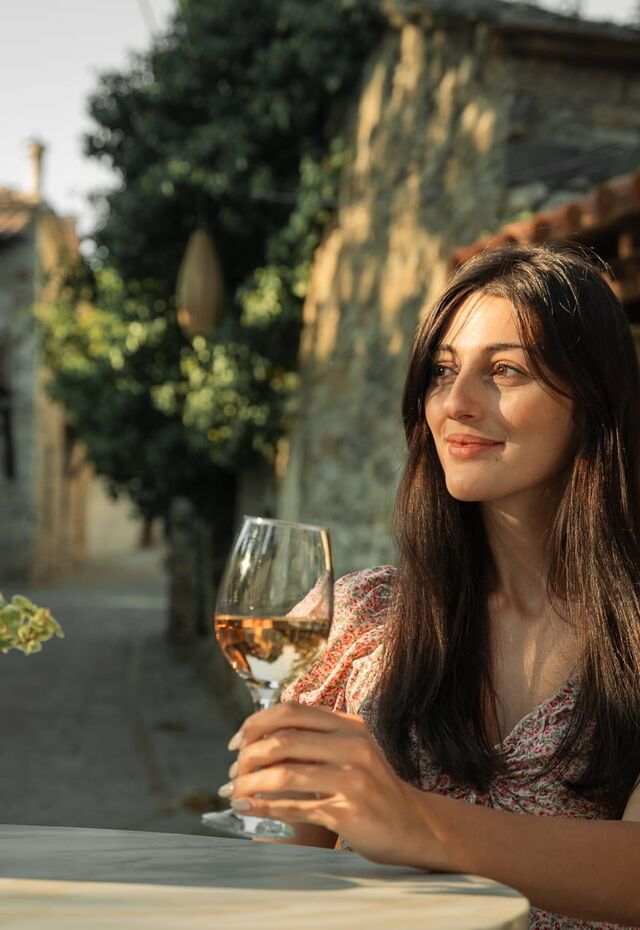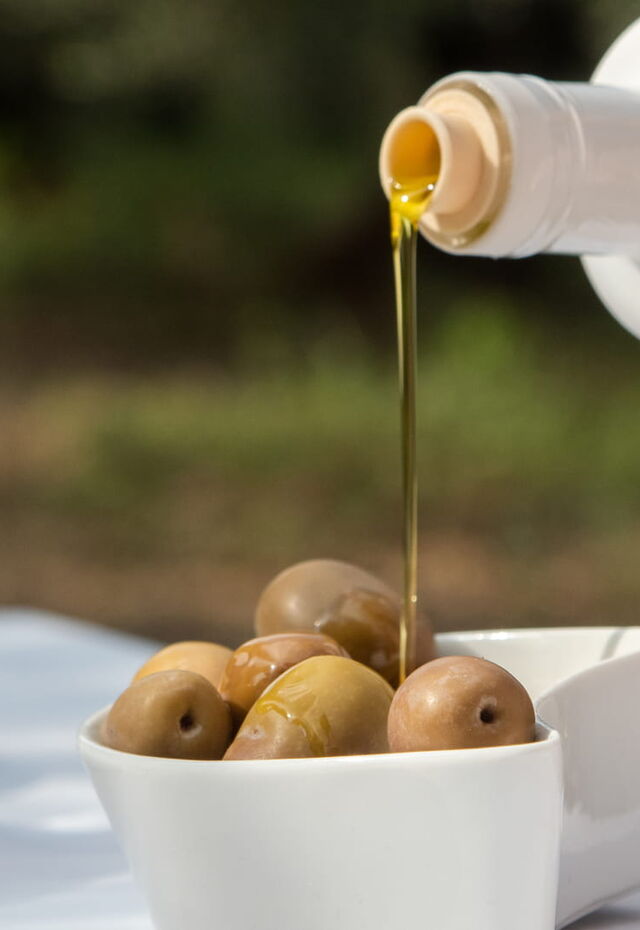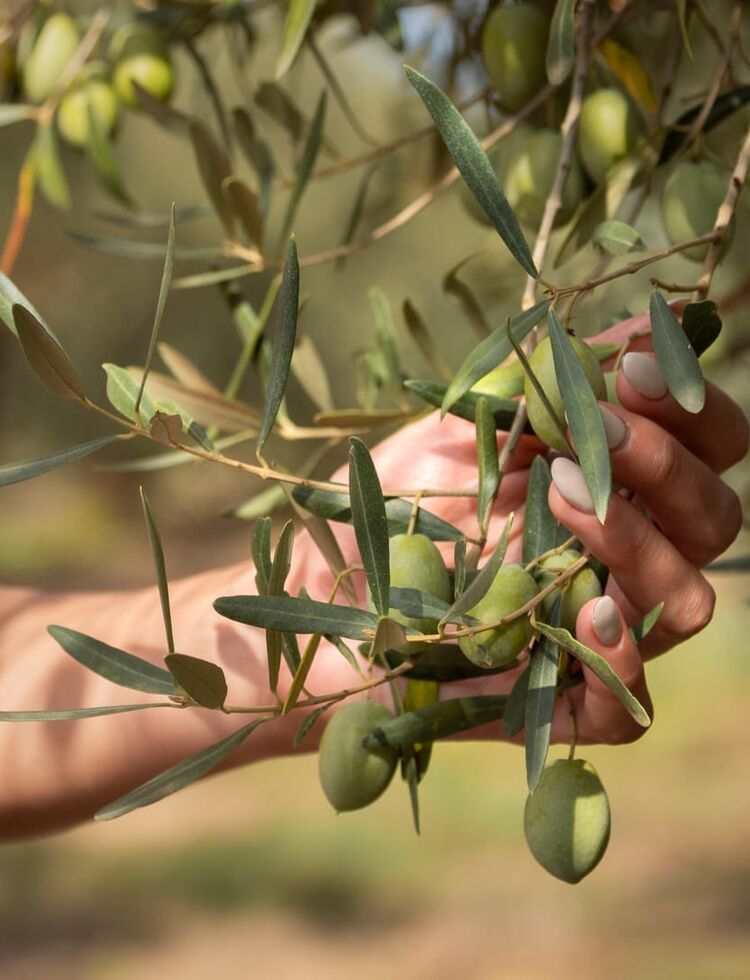Highlights of a food & drink tour of Halkidiki
Halkidiki’s honey heritage
Aristotle (famously born in Ancient Stagira, in eastern Halkidiki) championed both the goodness of honey and the perfect collaboration of honey bees, and beehives continue to dot the countryside of the region of his birth. Scented with the blossom of trees like pine, fir, oak, almond, chestnut and wild strawberry on which the bees feed, Halkidiki’s honey accounts for 30% of national production. You’ll enjoy it at the breakfast table and in both savoury and sweet dishes. The loukoumades in particular (fried dough balls drizzled with honey and cinnamon) are heavenly.
But to truly immerse yourself in Halkidiki’s honey heritage, you can have a hands-on experience by becoming a beekeeper for the day at Passion Honey, an apiary in Taxiarchis. Putting on protective equipment, you learn everything about the incredible life of the honey bee and its importance to the local biodiversity. Otherwise, everywhere you travel in Halkidiki (Nea Moudania, Nikiti, Neos Marmaras, Arnea…) you’ll see evidence of its honey tradition and be tempted to buy a jar.
Halkidiki’s famous olives
Halkidiki’s olive industry is made up of around 5 million trees, 310,000 hectares of cultivated land and 19,000 mostly small producers arranged in collectives. That’s a lot of olives! But where Halkidiki really distinguishes itself in Greece is in the production of Hondrolia or Halkidiki table olives (awarded PDO status), harvested while green or black depending on preference and exported in impressive numbers. If you’ve had a green olive from Greece (maybe stuffed with red pepper and cheese), chances are it’s from Halkidiki. And next time you do, consider that each is hand-picked to protect it from damage.
What you might not have tried before is Halkidiki’s agoureleo (also PDO) – the green, fruity and peppery extra-virgin olive oil made from unripe green olives that is especially low in acidity and high in antioxidants. Alternatively, if it’s clear and golden olive oil that you prefer, the oil from Metaggitsi (made with Hondrolia and Galano olives) has also been given Protected Destination of Origin status.
You can visit producers, such as Toleo Halkidiki Olive Grove in Metaggitsi, for an olive oil tasting session, where you’ll learn all about Greece’s noble fruit: What makes olive oil extra virgin? Why do olive oils taste different? How are they healthy? Which should I cook with? Tastings are offered elsewhere too, such as at Yanni’s Olive Grove (upon request). Or you could simply enjoy all those groves in Ormylia, Olynthos, Vatopedi etc, where you can pick up a bottle of olive oil straight from the source.
A dolmades cookery lesson
Behind every local product and dish, there’s a person who adds their passion and family knowhow. So your next Halkidiki food experience is to absorb all that wisdom in a cookery lesson. The cookery classes at Marianna’s Vineyards, in Nea Gonia, do all that and more because they also let you explore the family vineyard that is distinctive for not producing a single drop of wine. Instead, the product here is the vine leaves, picked and processed with incredible attention to detail.
Vine leaves are, of course, the key ingredient to Greece’s famous dolmades (stuffed vine leaves). You’ll learn how to prepare the stuffing, as well as the secrets of the rolling and folding technique and the cooking method. Marianna’s conversation and a glass or two of the family tsipouro are the other ingredients that make up the lunch menu.
Wine tasting and a vineyard tour
The sight of vineyards on gently rolling hills is one of the joys of driving around the Halkidiki countryside, where you’ll find everything from large-scale vineyards that export internationally to family-owned boutique wineries. Many offer wine tasting and vineyard tours that can be the highlight of your day or the focus of your entire holidays in Halkidiki.
The classic wine route of Halkidiki is from Agios Pavlos near Nea Kalikratia on the road towards Kassandra to the slopes of Mt Meliton in Sithonia (the second finger) and up to the vineyards around the villages of Arnea and Marathousa in central Halkidiki. A final treat (for men) is to explore one or two of the monastic vineyards of Mt Athos in the east.
Wherever you go, you’ll be introduced to local grape varieties (Assyrtiko, Malagouzia, Roditis, Xinomavro etc) and the ancient grape mentioned by Aristotle, Limnio, from which elegant, dry single-variety red wines dominated by the aromas or fresh herbs and the flavour of red berries are made today. Some Halkidiki wines have been given Protected Designation of Origin status and many vineyards have sea views that are part of the experience.
* For details of olive presses, apiaries and wineries offering culinary experiences, see the Good to Know section.



